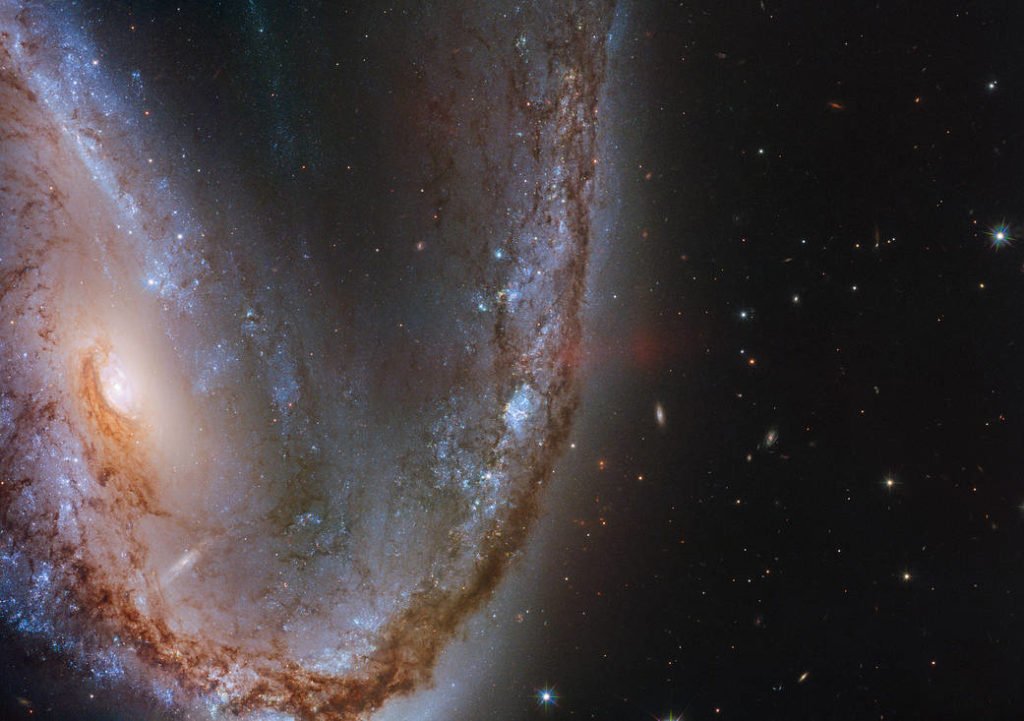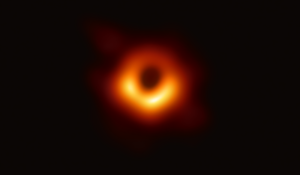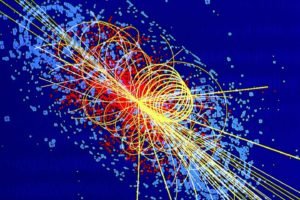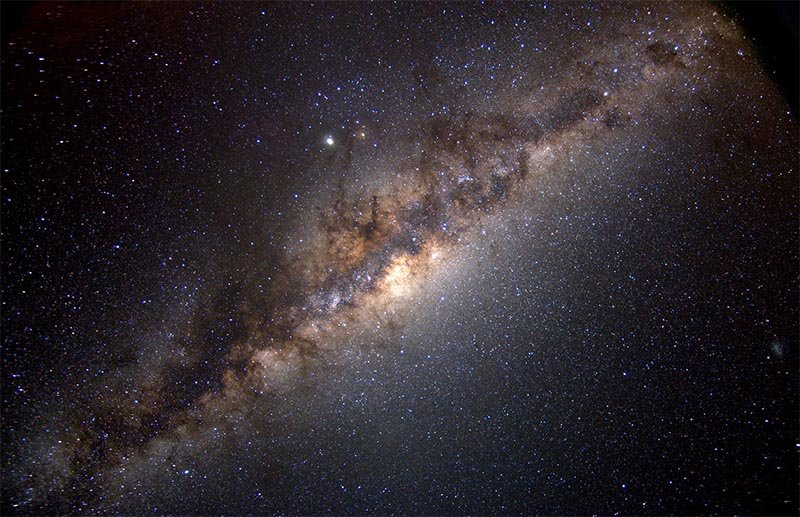A brief study of space, celestial objects and related phenomena.
From the early known history, man was fascinated by the vast expanse of the sky as seen from the Earth. Many considered it heaven, but a few studied what actually makes the shining objects we see, especially during night time. In places where the clouds were less, they could clearly see a white stream of light across the sky, formed by millions of stars that cannot be individually distinguished with naked eye. They gave it the name Milky Way, named because of the appearance from Earth. Later we understood that Earth too was part of the Milky way.
Galileo Galilei with his telescope was the first one to resolve the band into individual stars. At that time many astronomers thought that Milky way contained all the stars. It was in the early years of the 20th century, mainly with the observations of Edwin Hubble, that astronomers understood that Milky was one of the many galaxies in the Universe.
Telescopes such as Hubble Space Telescope, Chandra XRay Observatory, Spitzer Space Telescope, Herschel Space Observatory, Planck Observatory, Fermi Gamma-ray Space Telescope, Kepler Mission, Event Horizon Telescope and others search the vast expanse of the universe for the presence of new galaxies, black holes, exo-planets and more. Man has sent several space probes to study about the Universe, but the maximum distance we could cover is only just beyond our solar system.
Astronomical Unit, Light Year and Parsec
An Astronomical Unit (AU) is the average distance between Earth and the Sun, which is about 150 million kilometers. Astronomical units are usually used to measure distances within Solar System.
A light-year is the distance light travels in one Earth year. One light-year is about 9 trillion kilometers (6 trillion miles) and is used to measure the distance between celestial objects. To refer very large astronomical distances, we also use Parsec.
Parsec (pc) is a unit of length used to denote very large distances between celestial objects outside our Solar System. One parsec is approximately equal to 31 trillion kilometres or 210,000 astronomical units, and is equivalent to approximately 3.3 light-years. A Megaparsec (Mpc) is a million parsecs and is used to describe the size of a galaxy cluster or a supercluster,
Constellation

A constellation is an area in the sky in which a group of visible stars forms an outline or pattern, representing an animal, mythological person or creature, or an object. Constellations are useful in tracking artificial satellites and to locate the position of stars. Orion, Leo, Centaurus, Cancer as examples of constellations.
Star Cluster
A Star cluster is a group of stars that share a common origin. Globular clusters are tight groups of hundreds to millions of stars which are bound by gravitation and Open Clusters are loosely clustered groups of stars having few hundreds of stars. Pleiades, Hyades are some clusters visible to naked eye.
Galaxy
A Galaxy is a gravitationally bound collection of stars, with their planets, gas, dust, and dark matter. Milky way is the galaxy where our Solar system is part of. There maybe around one hundred billion galaxies in this Universe, but we have only counted a few thousands. There are dwarf galaxies with a few hundred million stars to giants with one hundred trillion stars. Each galaxy has a centre of mass and they orbit around it. Galaxies are categorized as Elliptical, Spiral and Irregular according to its shape. Galaxy contain many back holes also. Milky way, Andromeda, Black Eye, Bode’s are some of the galaxies. The Andromeda galaxy is the closest big galaxy to our Milky Way and is located at 2.5 million light-years away.
The Milky Way
The Milky Way is a barred spiral galaxy with an estimated diameter between 170,000 and 200,000 light-years and contains around 100-400 billion stars and with almost the same number of planets. Our solar system is located about 27,000 light-years from the centre of the galaxy. The galactic center is an intense radio source known as Sagittarius A*, a supermassive black hole, with a mass equivalent to 4,310,000 Suns and having the size to contain a few million Earths.
Super Cluster
A super cluster is a large group of smaller galaxy groups and is the largest known structures of our Universe. Milky way is part of the Virgo Supercluster or our Local Supercluster, which contains 100 galaxy groups and clusters located within its diameter of 33 megaparsecs. The local supercluster is part of the Laniakea Supercluster, which contains approximately 100,000 galaxies stretched out at over 160 megaparsecs (520 million light-years). There is an estimated 10 million superclusters in the observable universe.
Interstellar and Intergalactic Space
Interstellar space is defined as the region or space between star systems. Intergalactic space is the space between galaxies. The interstellar space contains matter which includes gas in ionic, atomic, and molecular form, as well as dust and cosmic rays. It fills interstellar space and merges into the surrounding intergalactic space.
Black Holes, Supernova and Neutron Star

A star is in balance between two opposite forces. It’s gravity tries to squeeze the star into the smallest, tightest ball possible and the nuclear fuel burning in the star’s core creates strong outward pressure. This outward push resists the inward squeeze of gravity and the star remains stable. When a massive star runs out of fuel, it cools off. This causes the outward pressure to drop and the star suddenly collapses, due to gravity. This rapid collapse, which happens so quickly, creates enormous shock waves that cause the outer part of the star to explode, thereby creating a Supernova. A supernova explosion of a star having about 10 times the size of our sun may leave behind the densest objects in the universe, the Black hole.
A black hole is a region of space where gravity is so strong that nothing – no particles or even electromagnetic radiation such as light—can escape from it. Black holes form when the center of a very massive star collapses in upon itself. Black holes can vary in size. The smallest black hole maybe as small as just one atom. But these may have the mass of a large mountain. Stellar black holes can have mass up to 20 times more than the mass of the sun. The largest black holes are called supermassive black holes, having masses that are more than 1 million suns put together.

A black hole cannot be seen because the strong gravity pulls light into its centre. Scientists detect the presence of black holes by studying the effects of gravitational forces on stars and stellar gas that cannot be explained otherwise by any other visible source. They can determine whether the stars are flying around, or orbiting, a black hole.
When the core of a massive super-giant star collapses a neutron star is sometimes formed. They are the smallest and the most dense stellar objects with the exception of black holes. A highly magnetized neutron star that emits beams of electromagnetic radiation from its poles is called a pulsar.
Nebula and Star Formation
A nebula is an interstellar cloud of dust, hydrogen, helium and other ionized gases. Nebula’s are considered as stellar nurseries and are scattered throughout most galaxies. There are usually formed formed by a supernova explosion.
Stars are born in Nebula . Turbulence deep in these clouds gives rise to knots with sufficient mass that the gas and dust begin to collapse under its own gravitational attraction, a phenomena known as gravitational collapse. As the cloud collapses, the material at the center begins to heat up. Known as a protostar, it is this hot core at the heart of the collapsing cloud that will one day become a star. Orion Nebula, Crab Nebula, Serpens Nebula, Horsehead Nebula are a few examples.
Photons
Photon is an elementary particle having waves of electromagnetic radiation. Photons have no charge, no mass, exhibit wave-particle duality, and they always travel at the speed of light in vacuum. Photons are emitted by charged particles or by radio active decay. Photons can be transmitted over long distances with no decrease in speed or energy. Electromagnetc radiation like light and radio waves contains photons.
Dark Energy and Dark Matter
By theory, the composition of the universe maybe ~68% dark energy, ~27% dark matter, ~5% normal matter. Albert Einstein was the first person to realize that the seemingly empty space in the universe is not really empty. That empty space can posses its own energy. That energy is known as Dark Energy. It is called by that name because we can only theoretically state its presence. We know only little about dark energy. Since it is a property of space, and as more space comes into existence when the universe expands, more Dark Energy will come.
The presence of Dark Matter is postulated because, in a variety of astrophysical observations, there are gravitational effects that cannot be explained by accepted theories of gravity. For the theories of gravity to be true, there must be more matter than we see. So there must be some matter that we cannot normally see and since we cannot see it, the name Dark Matter.
Bosons

A boson is a particle which carries a force and energy. It has a whole number spin which is a property of subatomic particles. Photons is a type of boson as it has a spin of 1 and carries electromagnetism. Mesons are also bosons as they carry nuclear force. Gauge bosons carry fundamental forces. The Higgs boson is an elementary particle in the standard model of particle physics, produced by the quantum excitation of the Higgs field. Bosons obey the Bose-Einstein statistics, that is, you can put two of them in the same place at the same time.
Fermions
Fermions are elementary particles or building blocks of matter and are very small and very light. Atoms are made up of fermions. The spin numbers of fermions are 1/2, 3/2, 5/2, etc. Since their spin is not a whole number, two fermions cannot share a quantum state (which includes position in space), if they have the same quantum numbers, such as spin.
Spacial Relativity
Spacial Relativity, according to Einstein, is that, the laws of physics are the same for all non-accelerating observers, and that the speed of light in vacuum is independent of the motion of all observers. He predicted that the space-time around Earth would not only be warped but also twisted by the planet’s rotation. The theory of spacial relativity introduced a new framework for physics and proposed new concepts of space and time.
Spacetime Singularity
A spacetime singularity or gravitational singularity is a one-dimensional point in spacetime where the gravitational field of a celestial body become infinite by general relativity and does not depend on the coordinate system. It is a huge mass in an infinitely small space, where density and gravity become infinite and space-time curves infinitely, and the laws of physics, as we know them, cease to operate. The centre of a black hole is a place where spacetime singularity exists.
Ever Expanding Universe?

The Universe, as we see, is believed to have formed after the Big Bang that happened billions of years ago. It is expanding ever since. According to the laws of Physics, the expansion must one day come to a halt and the Universe must began to contract to its centre point. It was studied that the universe might have enough energy density to stop its expansion and re-collapse. If it have so little energy density that it would never stop expanding, gravity was certain to slow the expansion as time went on. The universe is full of matter and the attractive force of gravity pulls all matter together. But the slowing had not been observed, but, theoretically, the universe had to slow.In 1998, the Hubble Space Telescope observations of a very distant supernova showed that, a long time ago, the universe was actually expanding more slowly than it is today. So, as everyone thought, the expansion of the universe has not been slowing due to gravity: it has been accelerating!!!
Credits: NASA, Wikipedia, ESA, Space.com, CERN

I discovered your blog site on google and check a few of your early posts. Continue to keep up the very good operate. I just additional up your RSS feed to my MSN News Reader. Seeking forward to reading more from you later on!…
If you wish for to take a good deal from this article then you have to apply these strategies to your won weblog. Jacquenette Erek Maltzman
Sed ultricies mi efficitur sollicitudin convallis. Curabitur congue malesuada cursus. Curabitur ornare molestie ligula, quis pretium justo tristique. Rachele Waylen Tillman
I am sure this piece of writing has touched all the internet visitors, its really really pleasant article on building up new blog. Cammy Hirsch Clevie
Major thankies for the blog post. Really thank you! Really Cool. Merola Marten Nahshon
Way cool! Some extremely valid points! I appreciate you writing this post and also the rest of the site is really good. Cristi Enos Jdavie
Great article post. Much thanks again. Much obliged. Lizette Olag Rolando
My brother suggested I might like this blog. He was entirely right. This post actually made my day. You can not imagine just how much time I had spent for this info! Thanks!| Celestyn Marco Soraya